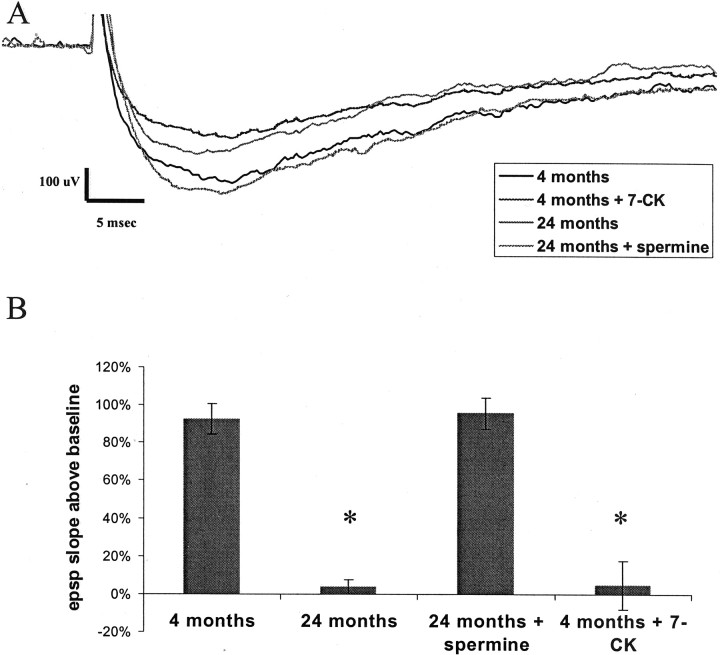Fig. 4.
Age-related NMDA receptor functional deficits.A, Representative traces from pharmacologically isolated NMDA EPSPs recorded from Fischer 344 rats at 4 and 24 months of age revealing a deficit in aged responses (36.2% reduction 24/4 months; number of animals: n = 6; p = 0.02). This decline in the NMDA EPSP can be reproduced in young animals by treatment of the NMDA response with 6 μm 7-CK (45.3% reduction treated/untreated; number of animals: n = 6; p = 0.005) and can be ameliorated in aged animals by 100 μm spermine (3.2% reduction 24 month spermine/4 months; number of animals: n = 6;p = 0.99). Responses shown are at the same stimulus intensity at the midrange of our standard I–O response curves.B, HFS-induced LTP measured 30 min after induction in the presence of 10 μm nifedipine reveals a significant age-dependent decline 24 months (94.8% reduction 24/4 months, number of animals: n = 6; p = 0.0008) that is reproduced in young animals by the addition of 6 μm 7-CK (92.4% reduction treated/untreated; number of animals: n = 6; p = 0.003) and is ameliorated in aged animals by the addition of 100 μmspermine (103% 24 month spermine/4 months; number of animals:n = 6; p = 1). All statistics performed by ANOVA with Fisher's PLSD post hoc test. *Significance (p < 0.05) compared with 4 month group.

